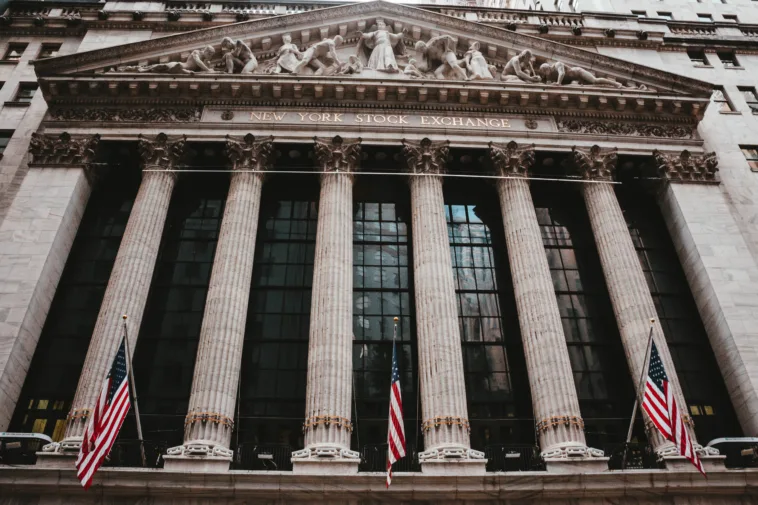The stock market crash of 1929, also known as the Great Crash or the Wall Street Crash of 1929, was a major financial crisis that marked the beginning of the Great Depression. It was a global event that had a significant impact on the world economy and contributed to the rise of totalitarian regimes in some countries.
On October 29, 1929, the stock market experienced a dramatic drop in prices, leading to panic among investors. Many lost their savings, and the crash had far-reaching consequences, including widespread unemployment, bank failures, and a sharp decline in international trade.
The stock market crash of 1929 is an important event in history that serves as a reminder of the dangers of speculation and the need for sound economic policies.
In this blog post, we will explore the causes of the crash, the events of the crash itself, and the consequences of the crash, as well as the lessons that can be learned from this historical event.
Causes of The Stock Market Crash:
There were several factors that contributed to the stock market crash of 1929. These included:
- Overproduction: During the 1920s, the United States experienced a period of economic growth and prosperity. This was due, in part, to the development of new technologies and mass production techniques, which allowed businesses to produce goods more efficiently and at a lower cost. As a result, there was a significant increase in the production of goods such as automobiles, radios, and appliances.
However, this increase in production led to overproduction, which meant that there was more supply than demand for these products. This created excess inventory and reduced profits for businesses, which eventually led to a slowdown in the economy.
- Speculation: Many people were buying stocks on margin, which meant that they were only paying a small percentage of the total value of the stock upfront. They hoped to sell the stock for a profit before paying the full amount. This speculation fueled the stock market bubble, as people were buying stocks based on speculation rather than the actual value of the companies.
The speculation was further fueled by widespread optimism about the stock market and the belief that stock prices would continue to rise indefinitely. However, when the market eventually crashed, many people lost their investments, as the value of the stocks plummeted.
- Interest rates: The Federal Reserve raised interest rates in 1928 and 1929 in an attempt to curb speculation and inflation. This made borrowing more expensive, which reduced the demand for stocks.
- Economic indicators: There were also several economic indicators that suggested that the economy was slowing down, such as declining industrial production and rising unemployment. These signs of economic trouble contributed to the overall uncertainty in the market and may have contributed to the stock market crash.
The Crash:
On October 29, 1929, the stock market experienced a dramatic drop in prices, leading to a panic among investors. This day, known as Black Tuesday, saw the Dow Jones Industrial Average (DJIA) fall by more than 11%, and the market lost a total of $14 billion in value.
The crash was not limited to the United States; it had a global impact and was felt in countries around the world. In the following weeks, stock prices continued to decline, and by November 13, the DJIA had fallen by almost 50% from its peak in September 1929.
The panic that ensued after the crash led to a widespread sell-off of stocks, as investors tried to get out of the market and protect their investments. This further fueled the decline in stock prices and contributed to the overall economic downturn.
The stock market crash of 1929 was a major financial crisis that had far-reaching consequences and marked the beginning of the Great Depression. It serves as a reminder of the dangers of speculation and the importance of sound economic policies.
Consequences
The wall street crash of 1929 had both immediate and long-term consequences. In the immediate aftermath of the crash, many people lost their savings, and businesses and banks failed. The crash led to a sharp decline in international trade and a widespread loss of wealth, as the value of stocks plummeted.
In the long term, the wall street crash of 1929 marked the beginning of the Great Depression, which was a major economic downturn that lasted for several years. The Depression had a profound impact on the world economy and was characterized by high unemployment, low industrial production, and falling prices (deflation).
The economic turmoil of the Great Depression contributed to the rise of totalitarian regimes in some countries, as people turned to authoritarian leaders who promised to restore order and prosperity. The Depression also had a significant impact on international relations and played a role in the events leading up to World War II.
The consequences of the stock market crash of 1929 were far-reaching and had a lasting impact on the world economy. It serves as a reminder of the need for sound economic policies and the dangers of speculation.
Conclusion
In summary, the stock market crash of 1929 was a major financial crisis that marked the beginning of the Great Depression. The main causes of the crash were a combination of overproduction, speculation, rising interest rates, and economic indicators that suggested a slowing economy.
The crash led to a dramatic drop in stock prices and a panic among investors, and it had both immediate and long-term consequences, including the widespread loss of wealth, the failure of banks and businesses, and the onset of the Great Depression.
The stock market crash of 1929 serves as a reminder of the dangers of speculation and the importance of sound economic policies. It is a significant event in history that has had a lasting impact on the world economy and international relations.







